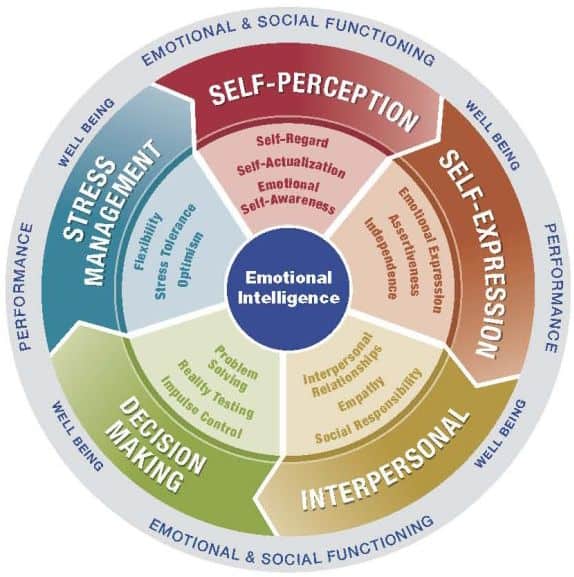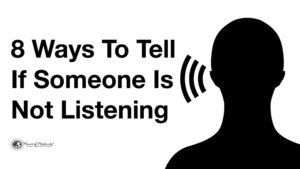What does it mean to be socially intelligent? Consider the person who is arguably the best example of the concept.
The Dalai Lama is beloved wherever he goes.
Just do a quick Google search and watch a few video clips. The adoration for the Dalai Lama quickly becomes apparent. People love him in Tibet (of course), but they also love him in places like India, the U.K, and even the U.S.
Why do we consider the Dalai Lama a Socially Intelligent Person?
Well, it can’t be for how he speaks. Although his English is serviceable, and his intellect razor-sharp, he can be hard to understand.
It can’t be for his religious beliefs. The Dalai Lama is a Tibetan Buddhist who often visits nations where the majority population is Hindu, Muslim, and even Christian.
It can’t even be for his fame. While most certainly recognizable, the Dalai Lama doesn’t have celebrity status in most places. Take away the multitude of cameras following him around, and most people would probably see an older man who dresses funny.
And who always seems to have a big smile on his face.
The simple truth is that the Dalai Lama is beloved because he possesses – among other qualities – a high degree of social intelligence. (For the purposes of this article, we will refer to social intelligence and emotional intelligence [EQ] synonymously.)
Let’s quickly define social intelligence as “the capacity to know oneself and to know others.” [Emphasis added]. It is in this capacity where the Dalai Lama excels.
In this article, we’re going to talk some more about how to be more socially intelligent.
Let’s get to it.
The above image is a model of emotional intelligence created by Canadian researchers at Multi-Health Systems. It’s an excellent, easy-to-understand framework of emotional intelligence. Above all, it provides a much-needed simplification of what can be a confusing topic.
While we will be focusing primarily on the ‘Interpersonal’ category of the model, let’s briefly describe each. These five main categories of the model are as follows:
- Self-perception
- Self-expression
- Interpersonal
- Decision making
- Stress management
We’ll also define the subcomponents of each group.
Self-perception
(Do you know your personal strengths and areas for improvement? Do you possess self-respect and authenticity?)
Emotional self-awareness: The ability to understand your emotions and their impact on your life.
Self-regard: The consideration of oneself, particularly one’s self-interests.
Self-actualization: The fulfillment of one’s talents and potentials in a way that brings contentment.
Self-expression
(How well do you communicate your emotions, including assertiveness? Do you feel comfortable with your sense of individuality?)
Emotional expression: The conveying of the state of emotions through verbal and non-verbal language.
Independence: Having a sense of individuality, along with the capacity of individual expression.
Assertiveness: The ability to stand up for oneself or others in a calm, positive, non-aggressive manner.
Interpersonal
(What is the quality of your relationships? Can you empathize with people and groups? Do you have a sense of social responsibility?)
Interpersonal relations: An intimate and mutually-felt association (i.e., bond) between two people.
Empathy: The skill of being able to consider and understand the perspective (e.g., emotions, thoughts) of another, particularly in a challenging environment or situation.
Social responsibility: Holding the interest of greater society in mind by acting in an obligatorily ethical manner.
Decision-making
(Can you aptly manage the state of your mind and emotions, no matter how difficult? How is your decision-making ability?
Impulse control: Controlling sudden convincing behaviors, emotions, and thoughts when appropriate.
Reality testing: The ability to objectively assess an emotion or thought against the backdrop of real-life situations.
Problem-solving: Dealing constructively with complex or difficult issues by finding workable solutions.
Stress management
(Can you remain flexible and tolerant in the face of stress and uncertainty?)
Flexibility: The willingness to compromise or change one’s position for the “greater good.”
Stress tolerance: The ability to be composed and relaxed in challenging situations, especially when facing strong emotions.
Optimism: Having a light-hearted and positive mindset in general.
You will notice that all of these components are interdependent. That is, it’s impossible to extract one aspect of the model without affecting the whole.
For example, consider the subcomponent of self-expression, assertiveness. Too much or too little assertiveness will influence the subcomponent interpersonal relationships (and even social responsibility) under the interpersonal category.
One must take a holistic approach to become more socially intelligent. We will discuss how to do so in the next session.
5 Ways to Become More Socially Intelligent
“Social intelligence is one of the greatest elements you can utilize to live and thrive in…society. You can.. understand how your behavior influences other people…you can hold better conversations…create better relationships, …and exist in this world with greater ease.” ~ Jonny Bell (Source)
Without further ado, here are five ways that anyone can become more socially intelligent.
Have an ‘outsider’s awareness.’
Estimates of how much communication is non-verbal vary from around 55 percent to as high as over 90 percent. You’ve no doubt heard of the “7% rule,” which claims that just 7 percent of what we communicate is verbal. Suffice to say that the majority of what we convey stems from two things: body language and tone of voice.
It’s essential, therefore, to be aware of how one comes off. You must have an outsider’s awareness.
Consider your body language. Is it engaging? Are you facing towards or away from whoever is speaking? How’s your eye contact? What about your tone? Is it inflecting or flat? Unless you’re Ben Stein, there should be at least a bit of variance.
If you don’t know, ask a friend. Many people do just that and can improve their communication skills with minimal effort.
Fine-tune your assertiveness
It is a mistake to equate assertiveness with aggression. Some people think that because they aren’t aggressive that they can’t be assertive. This is not true.
Assertiveness is simply the ability to state your thoughts and feelings with confidence. Thus, you’re asserting how you think and feel. It is very human and nothing for which to be ashamed.
It’s okay if you don’t quite yet have the confidence part down. First, understand that aggression is not an integral part of assertiveness – at least not right assertiveness. Second, take it slow; don’t try to go from 0-to-60 – from passive to assertive – too quickly. It will feel as if you’re going too hard against the grain and dampen your progress. Lastly, use a systematic approach. Research into the components of assertiveness, such as confident body language, and work on one thing at a time.
Practice virtual social intelligence
Some people drop any semblance of social intelligence as soon as they hop online. Backwardly, they think, “Oh, no one can see me, so now I can act like a complete ass and tell everyone how I really feel!” However, this sort of attitude carries into everyday interactions, whether we realize it or not.
Others are downright atrocious at carrying social intelligence skills over from in-person to a virtual medium, like the internet. Also, some do the same with a phone call, too.
Instead, think of any social media, chat, or some other platform as a means of honing your social intelligence skills. This process entails communication with some articulation, being polite and responsive, and practicing active listening.
Be yourself (cliché!)
Putting up a front in social interactions can be exhausting. It is also entirely unnecessary.
People who use a different persona in the public sphere primarily do so out of a fear of rejection. They think that if they act a certain way that this person or group of people will like or accept them.
For a short while, one may indeed gain some acceptance. However, continually putting up a front isn’t a wise long-term solution. People will see through the ‘mask” – and you risk losing something more valuable than likeability: credibility.
Be yourself and let the chips fall where they may. This is social intelligence.
Practice active listening to become more socially intelligent
While we’ve mentioned it briefly above, the art of active listening deserves its place.
All people fall into one of four categories when listening. A non-listener, where someone is paying zero attention to what’s being said; a marginal listener, where one’s reception and understanding of what’s said is not absent, but weak; an evaluative listener, wherein the person is listening critically in the anticipation of responding, whether than genuinely listening, and an active listener, which describes a person that is open and receptive to communication.
Active listening is a skill that can only be practiced when fully concentrating one’s attention on what is being said or conveyed. So to actively listen means you’ll become more socially intelligent by doing the following:
- Ignoring any impulse to interrupt the other person
- Displaying (genuine) interest on what is said
- Practicing empathy when appropriate
- Having open, receptive body language
- Remembering pertinent details



















